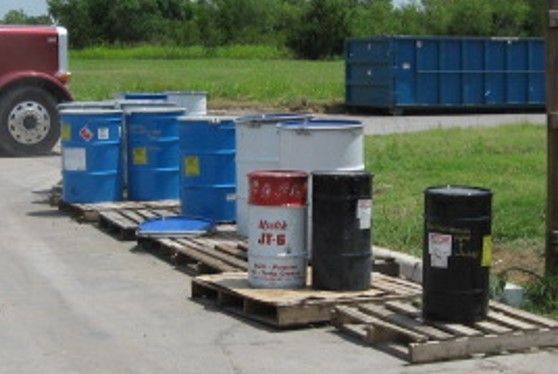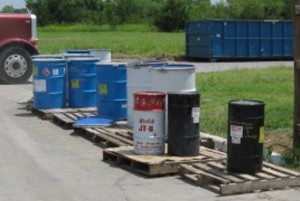(12.12.16) From a customer who had just completed one of my RCRA Training Webinars:
Hi Daniel,
Thanks for the training today. I am working on completing the evaluation and will get that to you soon.
I have a couple of follow up questions. We are an SQG (Small Quantity Generator of hazardous waste).
Not sure of your hazardous waste generator status? |
 If you have a Lab-Pack with F and U codes, could you send those offsite in the same drum if they are going to be treated the same?
If you have a Lab-Pack with F and U codes, could you send those offsite in the same drum if they are going to be treated the same?- Do you have any guidance on how frequently Lab-Packs should be sent out?
- Do you have any additional guidance on satellite accumulation and having it be in line of site? We have some satellite accumulation in the lab’s walk in closet in a flammable cabinet rather than out in the general work space. It is generated in the lab.
Thank you.
Contact me with any questions you may have about the generation, identification, management, and disposal of hazardous waste Daniels Training Services, Inc. 815.821.1550 |
My reply that same day:
Thank you for contacting me. Please see below:
- EPA regulations do not address the off-site transportation of hazardous waste other than to reference USDOT regulations. Editor’s note: This isn’t entirely correct as the USEPA does have pre-transportation requirements for the off-site transportation of hazardous waste (read: USEPA Requirements for off-site Transportation of Hazardous Waste Containers and read how the regulations for marking hazardous waste containers have changed under the new Generator Improvements Rule. And, of course, USEPA regulations apply to a hazardous waste from ‘cradle-to-grave’ which includes its transportation.
- USDOT regulations at 49 CFR 173.12(b)(2)(i) regarding the shipment of hazardous waste lab packs reads in part: “Each outer packaging may contain only one class of waste material.” So, the waste codes don’t matter. Nor does the ultimate treatment method. What matters is the USDOT hazard class of the hazard waste. It is quite possible that both an F-code and U-code hazardous waste are in the same USDOT hazard class, i.e. both are Class 3 Flammable Liquids and can therefore be packaged in the same container. Other requirements for 49 CFR 173.12(b) must be met for the shipment of hazardous waste lab packs.
- I am not aware of any guidance on how frequently lab packs must be sent off-site for disposal. However, as an SQG you must not accumulate hazardous waste on-site beyond 180 days or 270 days if the TSDF you must use is >200 miles away. 30 day extensions are available in extreme circumstances. Also, you must not accumulate >6,000 kg of hazardous waste on-site at one time.
- ‘Line of sight’ is only one way to comply with the second of two requirements for a satellite accumulation container. The goal is to have the container ‘under the control of the operator’. Two acceptable methods to accomplish this are: 1. ‘Line of sight’ & 2. Container is secured in some manner where access is limited to operator(s). This second method could be accomplished by keeping it in a secure cabinet in a work area that is restricted to those who generate the waste, e.g. lab personnel. Based on your description, it sounds like your satellite accumulation container is ‘under the control of the operator’.
I hope this helps.
Please don’t hesitate to contact me with any other questions.
And that was it!
Whether you need training, a consultation, or just have a question about the management of waste or the transportation of hazardous materials, please don’t hesitate to contact me.


